The Covenanter A13 Mk.III Cruiser Mark V tank
The Covenanter A13 Mark III Cruiser Mk V tank is regarded as one of the worst vehicles ever produced in Britain at a time when the country was desperate for tanks. This training tank example was buried under 3m of clay soil in Surrey England by the Canadian Army before they left for D-Day.
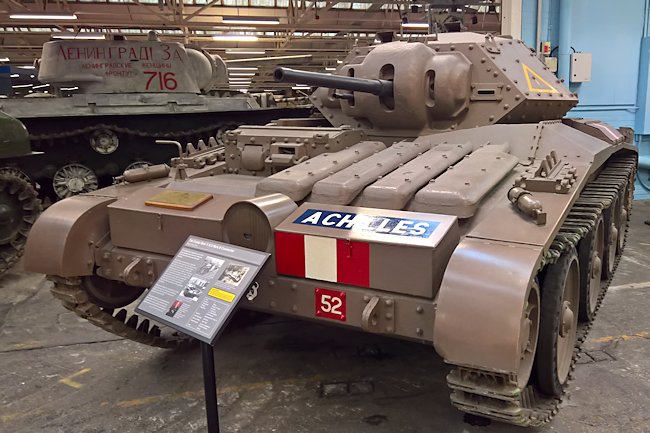
Surviving Covenanter A13 Mk.III Cruiser MkV Tank at the Bovington Tank Museum
Location
This Covenanter tank is on show at the Tank Museum, Linsay Road, Bovington, Dorset. The museum does not open until 10am. The nearest train station is Wool Railway Station. You can walk the 2 miles to the Museum but there are not pavements along the country road and if you are travelling with children it can be dangerous. It takes 45 minutes by foot. There is an irregular bus service from Wool Station that will get you to the museum but they only come once an hour in the morning starting after 9.30.
The last bus back to the station from the Tank Museum is just after 13.45 which is really silly. There is no Sunday bus service. The easiest way to get to the museum from the train station is by taxi. They can be pre booked with Garrison Cars to meet you when your train arrives and pick you up for the return trip from outside the museum. Each trip costs about £7. Their phone number is 01929 463395
Specifications
The Covenanter was armed with a quick firing QF Vickers 2-pdr (40 mm) gun with 87 rounds. It also had a coaxial 7.92 mm Besa machine-gun with 3750 rounds. It had a crew of four: commander; driver; gunner and loader. It weighed 18 tonnes and was powered by a Meadows D.A.V flat-12, 340 hp (250 kW) petrol engine. It had a top road speed of 31 mph (50 km/h) and an operational range of about 100 miles (160km). Its armour thickness ranged from 6mm to 40mm. 1771 were produced.
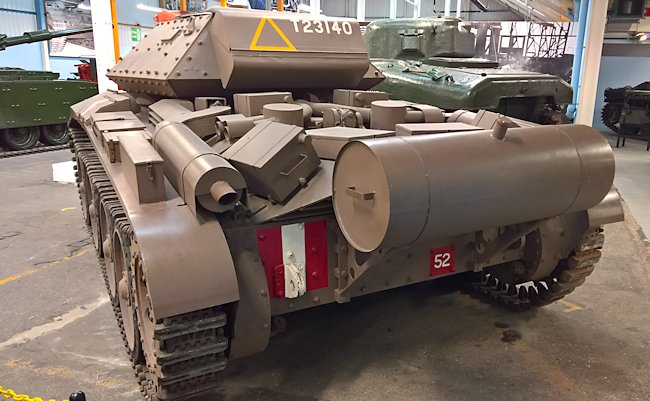
Rear view of the external fuel tank fitted to the rear of the Covenanter A13 Mk.III Cruiser MkV Tank
Covenanter - A bad tank?
The tank was to be powered by a Meadows, flat-twelve cylinder engine but this left no room at the back for the radiators. They were instead located at the front in the space where a hull machine-gunner would normally go.
This proved to be one of the main faults of the design. Worse still, it was planned to make the road wheels from cast aluminium to save weight, but aluminium was reserved for the Royal Air Force so the wheels had to be made from pressed steel. This made the tank as heavy as the suspension could bear.
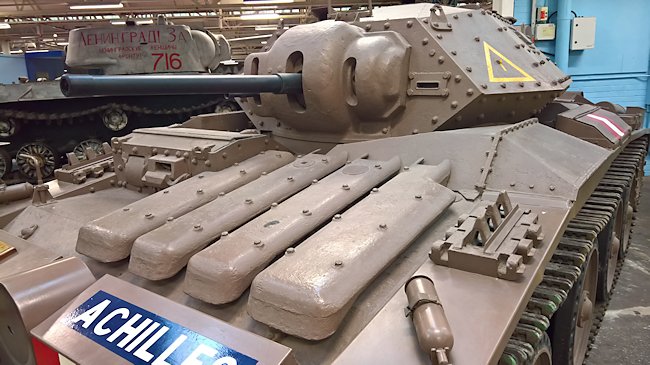
Close up view of the external armoured radiator fitted to the front deck of the Covenanter A13 Mk.III Cruiser MkV Tank
Being low and sleek, the Covenanter was fast on a good day but it was chronically unreliable so that of some 1200 tanks built, none was ever accepted for active service. Due to engine overheating and fighting compartment ventilation problems, the Covenanter was never sent abroad, where other models were first blooded, in the North African campaign.
Instead, all production vehicles were used exclusively for training in the British Isles. It was first given to the reconstructed British 1st Armoured Division, a shadow of its former self, after loosing all its equipment in and around Dunkirk. After that, they were transferred to the 9th Armoured Division, when the 1st was transferred to North Africa.
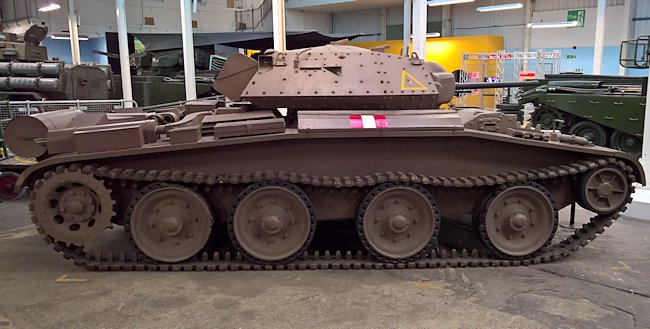
The Covenanter A13 Mk.III Cruiser MkV Tank used Christie suspension and had a very low profile.
However, a small batch of Convenanters saw the light of Africa with the REME (Royal Electrical and Mechanical Engineers) for maintenance and evaluation, and according to photos, possibly saw action with the King’s Force’s Churchills Mark III.The Covenanter also equipped the Guards Armoured Division and part of the 1st Polish Armoured Division, for training in Great Britain in 1942-43.
This extract comes from the history of the 13th/18th Royal Hussars.'The regiment had been re-equipped with the Covenanter tank, and a very bad tank it was thought to be. It was unreliable mechanically, lightly armoured and carried a two-pounder gun.'
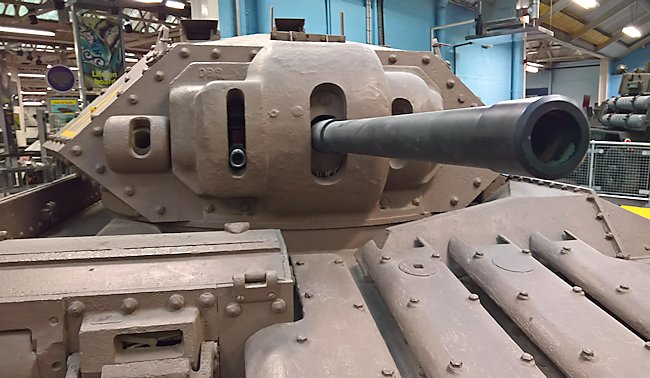
The Covenanter Tank was armed with a quick firing QF Vickers 2-pdr (40 mm) gun with 87 rounds. It also had a coaxial 7.92 mm Besa machine-gun with 3750 rounds.
The Mark V was the first cruiser to be named. Covenanter was the name of a XVIIth century Civil War Scottish religious faction, and the letter C became customary for cruisers. The tradition stuck so well that it survived until today's British MBTs. (Crusader, Cromwell, Comet, Centurion, Chieftain, Challenger etc...)
The Tank Museum's Covenanter tank was buried 3m deep in a field on Bradley Farm (now Denbies Wine Estate) in the valley below Ranmore Common, Dorking Surrey. It was excavated sometime in the late 1970s. Why it was buried remains a mystery. It is believed that they were not serviceable and therefore buried as rubbish. One Covenanter tank did see enemy action during the Second World War but it took place in Britain. It was working with an armoured train in Kent when it was bombed by a German aircraft and knocked out.
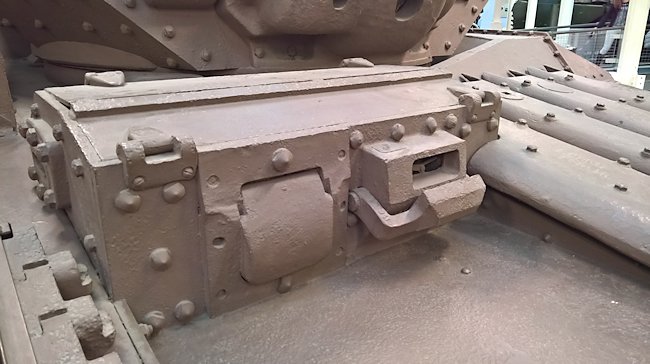
The Covenanter Tank driver's position
Buried Tanks
This Canadian Army Covenanter training tank was buried under 3m of clay when the troops left for D-Day. They were camped around the area of Dorking, Leatherhead, Bradley Farm (now Denbies Wine Estate) and Ranmore Common in Southern England in the first half of 1944. It is believed that this Covenanter and two other broken down tanks were buried along with other rubbish by the Canadian Army rather than leaving them in the open to rust away.
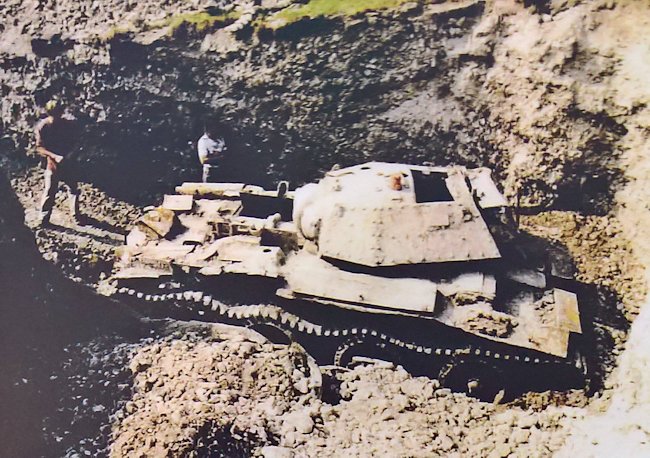
This Canadian Army Covenanter Tank was buried under 3m of clay when the troops left for D-Day
Dick Gover, who has lived at Dairy Farm Cottages on the top of Ranmore Common near Dorking in Surrey since 1971 says: 'The demolition people who dealt with the Fort in 1971-ish persuaded Lord Ashcombe [the then owner of Denbies Estate] to let them dig up the tank in the Dell guided to the site by Mr Hitchcock (retired Estate bailiff who had been Sergeant of the Home Guard). They brought it up to Dairy Farm on a low loader with the intention of restoring it but never did anything. Then the farmers pushed it out of the barn and it became overgrown with brambles. Then the Bovington Tank Museum heard about it and took it away because it is rare. The story was that there are more buried: tanks or personnel carriers and even motor bikes in their packing cases.' It was in a very deep 3m hole and they needed earth removal equipment to shift tons of earth before they could extract it
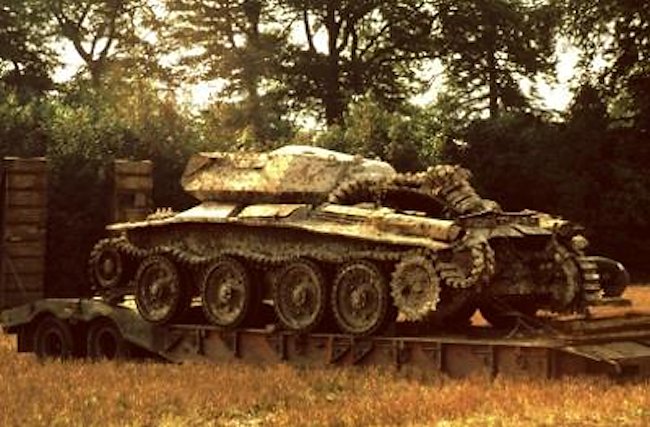
Recovered Canadian Army Covenanter Tank on way to be restored at the Tank Museum Bovington
The next three photographs were found in the archives of the Dorking Heritage Museum. They were taken after the Covenanter was recovered from the deep hole in the 1970s. What is interesting is that in the background there are no vines. The area was known as Bradley Farm. This was before it was taken over and renamed Denbies Wine Estate.
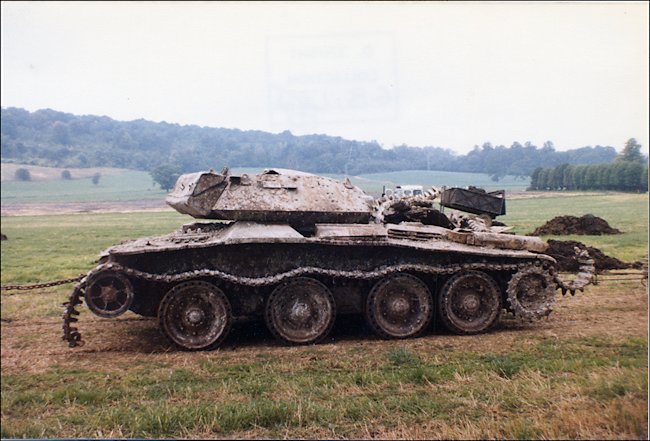
Recovered Canadian Army Covenanter Tank Bradley Farm in the 1970s (Photo -Dorking Heritage Museum)
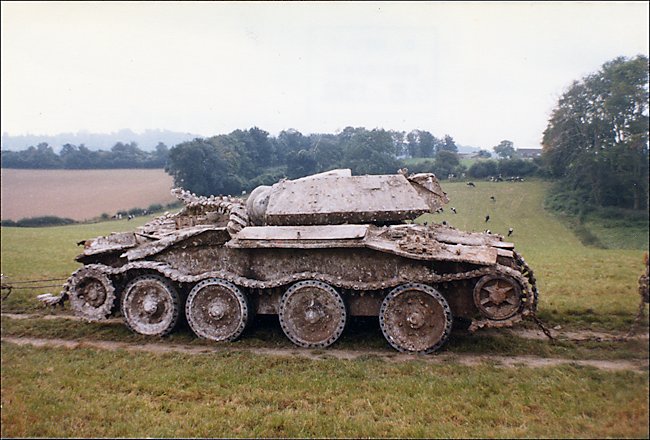
Recovered Canadian Army Covenanter Tank Bradley Farm in the 1970s (Photo -Dorking Heritage Museum)
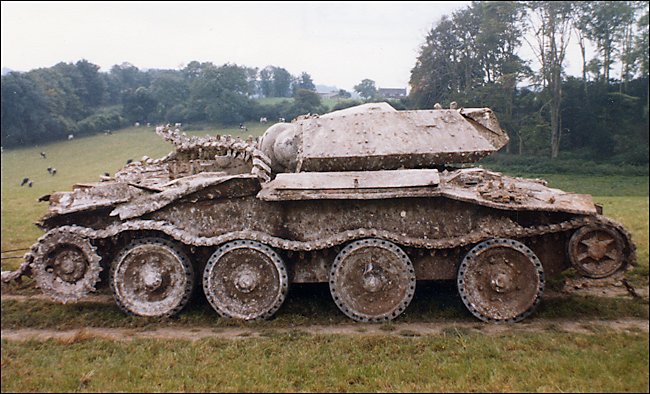
Recovered Canadian Army Covenanter Tank Bradley Farm in the 1970s (Photo -Dorking Heritage Museum)
Bradley Farm storage photos
The farmer allowed the tank to be dug up for the Tank Museum to collect and restore. When the museum was notified that the Covenanter tank had been dug up they expected the farmer to transport it to the museum in Bovington, Dorset. This was unrealistic so it was kept in a hay barn until the Tank Museum Bovington eventually came and recovered the tank.
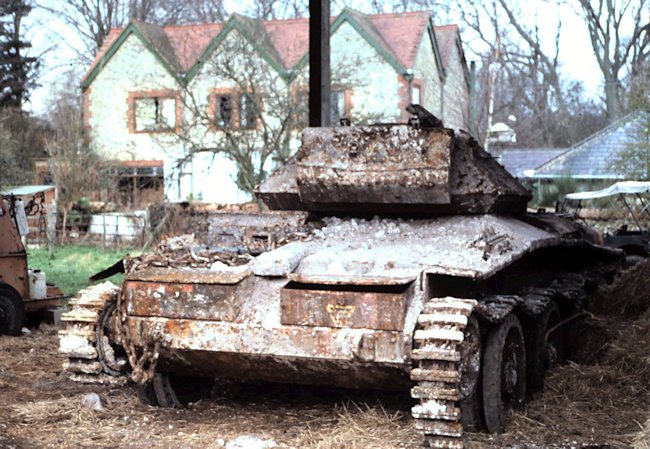
Recovered Canadian Army Covenanter Tank at Bradley Farm (Photo -Tony Lawrence - Dorking Models)
These photographs show the front of the tank and the unit identification badge of a yellow inverted triangle with a bulls head. This is the badge of 79th Armoured Division. This unit was formed as a standard tank division in November 1942 but in March 1943 it was disbanded because of lack of resources. This would have been when the unit's tanks would have been sent to the Canadian infantry 3rd Division who were starting to arrive in numbers and need infantry training tanks.
The 79th was reformed under the leadership of Major General Percy Hobart to develop specialised armoured vehicles like the DD-tanks, Churchill Crocodiles, Sherman Flail tanks etc.. Hobarts funnies. Obsolete Covenanter training tanks were no longer needed by Hobart. The Canadian 3rd Division being an infantry not tank unit did not bother to repaint their training tank
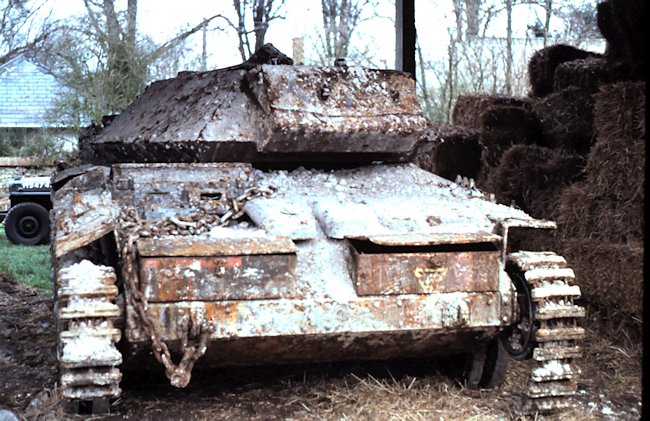
Recovered Canadian Army Covenanter Tank at Bradley Farm (Photo -Tony Lawrence - Dorking Models)
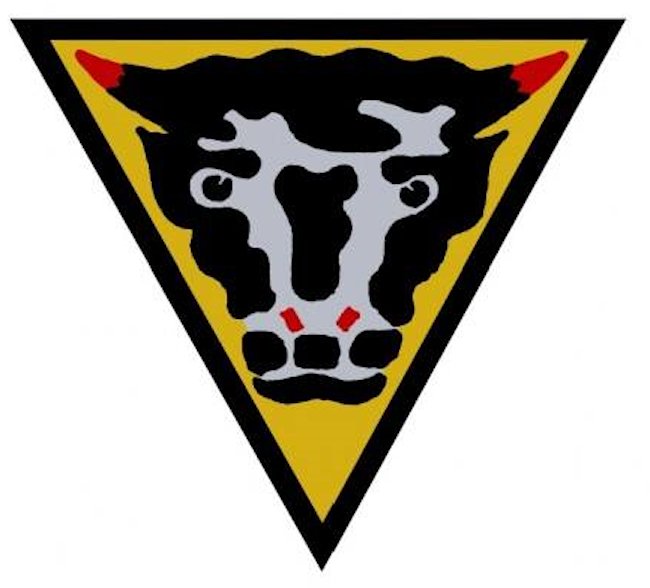
79th Armoured Division unit badge as seen painted on the front right stowage box.
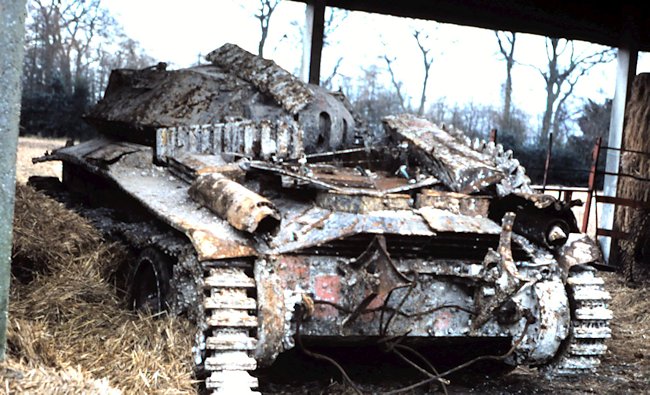
Recovered Canadian Army Covenanter Tank at Bradley Farm (Photo -Tony Lawrence - Dorking Models)
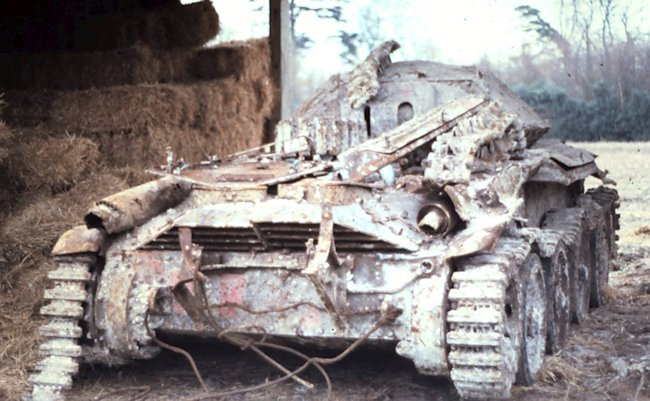
Recovered Canadian Army Covenanter Tank at Bradley Farm (Photo -Tony Lawrence - Dorking Models)
So far the only identification badge or mark that has been found on the second Canadian Covenanter tank dug up Monday 23rd May 2017 is the number 51 in white lettering on a red square back ground. This would suggest that it belonged to the Canadian 6th Armoured Regiment (1st Hussars)
Where can I find other preserved Covenanter A13 Cruiser Tanks?
- Bovington Tank Museum is the only surviving complete Tank example
- 2x Wrecked Covenanter hulls - Titchwell Beach, Norfolk, England
- 1x Wrecked Covenanter hull - Army Firing range, West End, Surrey, England
- Covenanter Bridgelayer - Royal Australian Armoured Corps Tank Museum Puckapunyal, VIC, Australia
- Covenanter Bridgelayer - Royal New South Wales Lancers Lancer Barracks and Museum, Parramatta, Australia
- Source - Pierre-Oliver Buan - http://the.shadock.free.fr/Surviving_Panzers.html
WW2 Tank books

